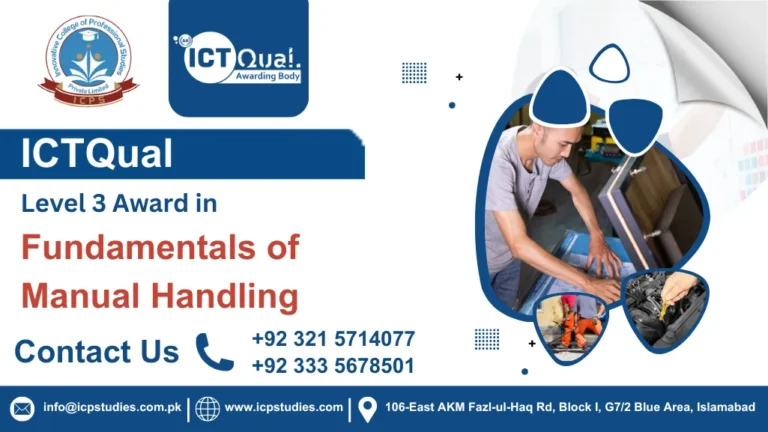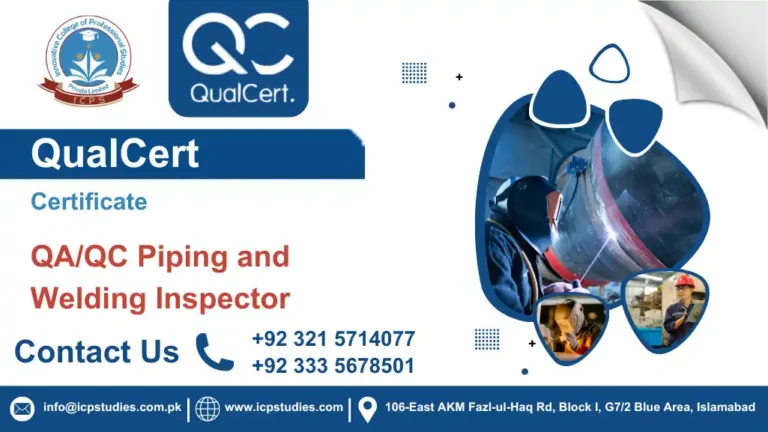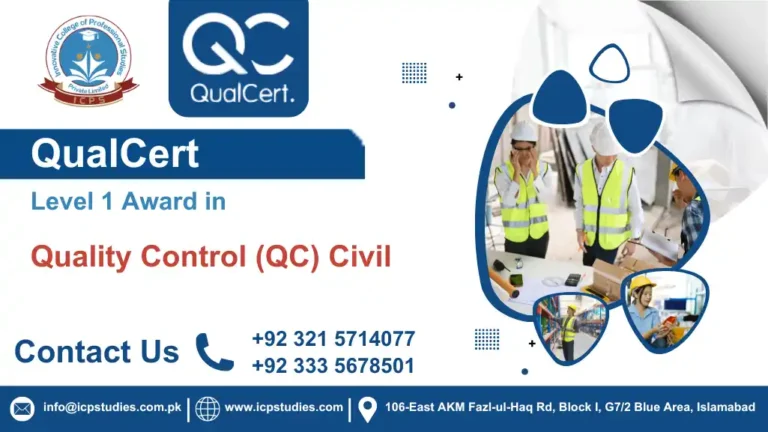In today’s fast-paced and risk-conscious business environment, effective leadership is crucial to ensuring safety and operational success. The QualCert Level 3 Award in Leading Safely is designed for those looking to enhance their leadership skills while prioritizing safety and well-being in the workplace. This course equips individuals with the necessary tools to lead safely and effectively, making it an invaluable resource for professionals at all levels.
The QualCert Level 3 Award in Leading Safely provides an accredited qualification that focuses on leading teams with an emphasis on safety management. It is ideal for those in supervisory, managerial, or leadership roles who want to develop their skills in fostering a safe and productive work environment. The course is designed to meet the evolving needs of industries where safety is a top priority, ensuring that learners gain practical insights and effective strategies to lead in a safety-conscious manner.
The QualCert Level 3 Award in Leading Safely is a crucial step for any professional looking to strengthen their leadership capabilities while ensuring safety remains a top priority in their organization. Through this course, you’ll gain the knowledge and skills required to foster a safer, more compliant workplace and lead teams effectively with safety at the core. Whether you’re in a supervisory role or aspiring to take on more responsibility, this qualification will prepare you for success in today’s safety-conscious business environment.
Ready to lead safely? Enroll in the QualCert Level 3 Award in Leading Safely today and take the first step towards becoming a more effective and safety-focused leader!
All About QualCert Level 3 Award in Leading Safely
Course Overview
The QualCert Level 3 Award in Leading Safely is a comprehensive and accredited course designed to equip leaders with the essential skills and knowledge to manage safety effectively within their teams and organizations. This qualification is ideal for those in supervisory, managerial, or leadership roles who want to improve their ability to lead with a focus on creating and maintaining a safe working environment.
As workplace safety continues to be a critical factor in organizational success, this course provides participants with a practical understanding of safety leadership, risk management, legal obligations, and behavioral safety. By exploring these core areas, participants will be able to lead their teams in a way that prioritizes safety, reduces risks, and fosters a culture of well-being.
This flexible, self-paced course combines theoretical knowledge with practical application, ensuring that learners not only understand safety principles but can also implement them effectively in their daily leadership activities. Whether you’re looking to enhance your leadership skills or pursue a more safety-focused career path, the QualCert Level 3 Award in Leading Safely is the perfect foundation for advancing your expertise and becoming a more effective and safety-conscious leader.
Study Units
- Introduction to Safety Leadership
- Risk Assessment and Management
- Legal and Regulatory Compliance
- Communication and Engagement
- Safety Management Systems
- Leading by Example
- Continuous Improvement
The QualCert Level 3 Award in Leading Safely is designed to be accessible to a wide range of learners. However, to ensure that participants are able to fully benefit from the course, there are a few recommended entry requirements:
- Experience in a Supervisory or Managerial Role
This course is ideal for individuals already working in supervisory, managerial, or leadership positions. A basic understanding of leadership principles and responsibilities in the workplace will help participants grasp the course content more effectively. - Basic Understanding of Health and Safety Principles
While no formal qualifications in health and safety are required, a general awareness of health and safety concepts is beneficial. If you have experience in a role where safety is a concern, this will aid in your understanding of the course material. - English Language Proficiency
As the course is delivered in English, learners should have a good level of proficiency in reading, writing, and understanding English to ensure they can comprehend the course materials and complete assessments successfully. - Motivation and Commitment to Learning
Since the course is self-paced, learners should be able to manage their time effectively and demonstrate a commitment to completing the coursework within the required timeframe.
These entry requirements ensure that participants are prepared to engage with the course content and achieve the learning outcomes effectively. If you do not meet the full criteria but have relevant experience or a keen interest in the subject, you may still be eligible to join the course with approval from the course provider.
The QualCert Level 3 Award in Leading Safely is ideal for a wide range of professionals who are in or aspiring to leadership positions and want to enhance their ability to manage safety in the workplace. This course is specifically designed for:
- Supervisors and Managers
Those already in supervisory or managerial roles who wish to improve their leadership skills with a focus on safety. This includes individuals responsible for overseeing teams and ensuring compliance with health and safety standards. - Team Leaders
Professionals leading smaller teams or units who need to develop a deeper understanding of how to create a safety-first culture and ensure safety practices are consistently followed. - Safety Managers or Officers
Safety managers or those in charge of health and safety within their organizations will benefit from this course by enhancing their leadership capabilities and learning how to engage others in safety initiatives. - Health and Safety Practitioners
Individuals with a background in health and safety who wish to expand their leadership knowledge and develop skills to influence and lead safety efforts at an organizational level. - Aspiring Leaders
Individuals who are looking to take on leadership responsibilities in the future and want to gain the skills needed to effectively lead teams with safety as a top priority. - Human Resources and Occupational Health Professionals
Those in HR or occupational health roles who are responsible for supporting workplace safety initiatives and want to develop a deeper understanding of how leadership impacts safety culture. - Anyone Interested in Enhancing Their Leadership Skills
If you are looking to improve your leadership capabilities and become more effective at ensuring safety in your workplace, this course is perfect for you.
The course is suitable for professionals across various industries where safety is critical, including construction, manufacturing, healthcare, logistics, and more. If you’re aiming to lead with confidence and ensure a safe working environment, the QualCert Level 3 Award in Leading Safely is the right choice for you.
Learning Outcomes
- Gain a foundational understanding of fire safety management principles and best practices.
- Recognize the critical role of leadership in promoting, implementing, and maintaining fire safety standards within an organization.
- Learn about the legal and regulatory framework governing fire safety and the responsibilities it imposes on organizations.
Unit 2: Risk Assessment and Hazard Identification
- Conduct thorough fire risk assessments to identify potential fire hazards and vulnerabilities in the workplace.
- Learn how to prioritize identified fire hazards based on their potential risks and impacts.
- Evaluate the likelihood and consequences of fire incidents to inform the development of effective risk mitigation strategies.
Unit 3: Fire Prevention Strategies
- Implement proactive measures to prevent fires within the workplace, focusing on reducing risk factors.
- Understand the importance of proper housekeeping, equipment maintenance, and safe storage practices in minimizing fire hazards.
- Develop tailored fire safety policies and procedures specific to the needs of the organization.
Unit 4: Emergency Response Planning
- Design and implement robust emergency response plans to effectively manage fire incidents.
- Coordinate and communicate evacuation procedures, establishing clear assembly points for safe evacuation.
- Cultivate strong communication skills during fire emergencies to provide clear instructions and minimize confusion or panic.
Unit 5: Fire Safety Training and Communication
- Create and deliver comprehensive fire safety training programs tailored to various employee roles.
- Promote awareness and foster a culture of fire safety throughout the organization.
- Effectively communicate fire safety policies, procedures, and updates to all stakeholders to ensure everyone is informed and prepared.
Unit 6: Fire Safety Equipment and Maintenance
- Understand the different types of fire safety equipment, such as extinguishers, alarms, and sprinkler systems, and their specific functions.
- Learn the maintenance procedures required to ensure fire safety equipment is fully operational.
- Conduct regular inspections and testing of fire safety equipment to promptly identify and address potential issues.
Unit 7: Legal Compliance and Regulatory Requirements
- Gain knowledge of relevant fire safety legislation, regulations, and industry codes of practice.
- Understand the legal responsibilities and obligations that managers and employers have regarding fire safety in the workplace.
- Ensure compliance with fire safety standards and regulations to reduce legal risks and avoid liabilities.
Unit 8: Incident Investigation and Continuous Improvement
- Conduct post-incident investigations to identify the root causes of fire-related incidents and contributing factors.
- Use the findings from investigations to improve fire safety practices and prevent similar incidents in the future.
- Implement continuous improvement strategies to enhance fire safety standards and ensure a culture of safety.
Unit 9: Special Considerations and Vulnerable Groups
- Recognize the unique fire safety needs of vulnerable individuals, such as children, the elderly, and people with disabilities.
- Implement additional measures to ensure the safety and accessibility of fire evacuation plans for vulnerable groups.
- Collaborate with relevant agencies and stakeholders to address the specific challenges of fire safety for these populations effectively.
FAQs QualCert Level 3 Award in Leading Safely







